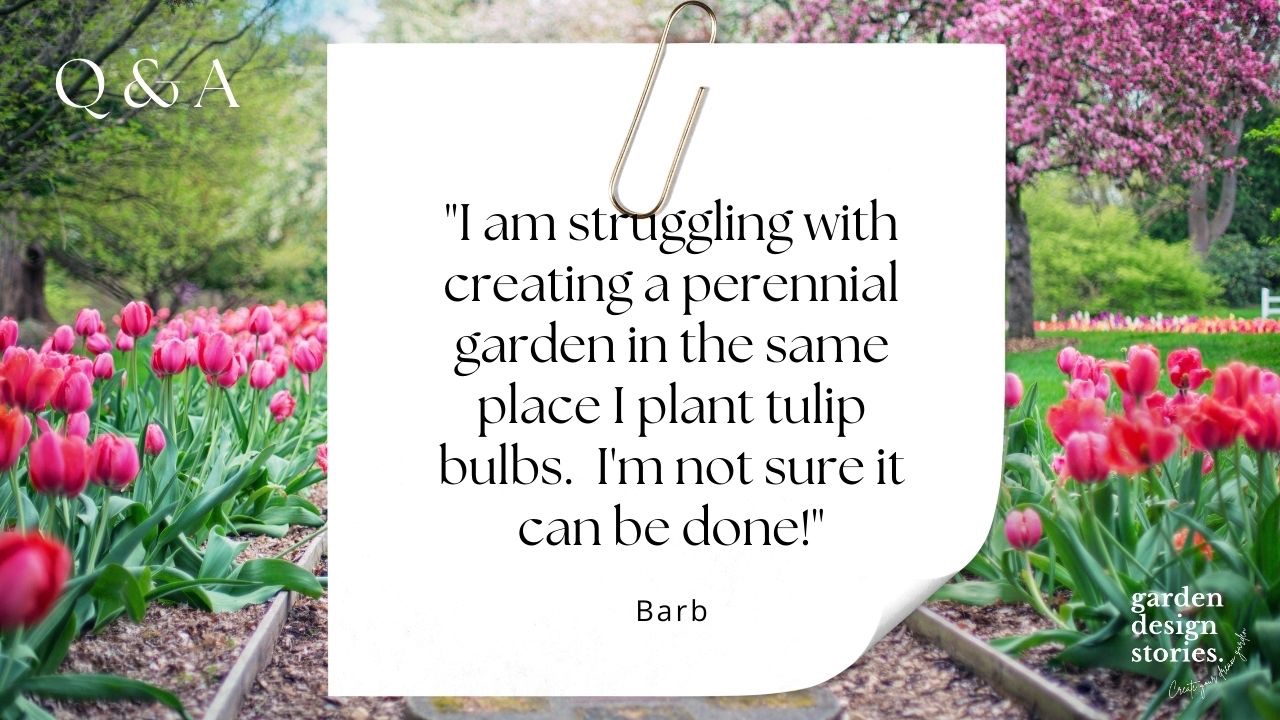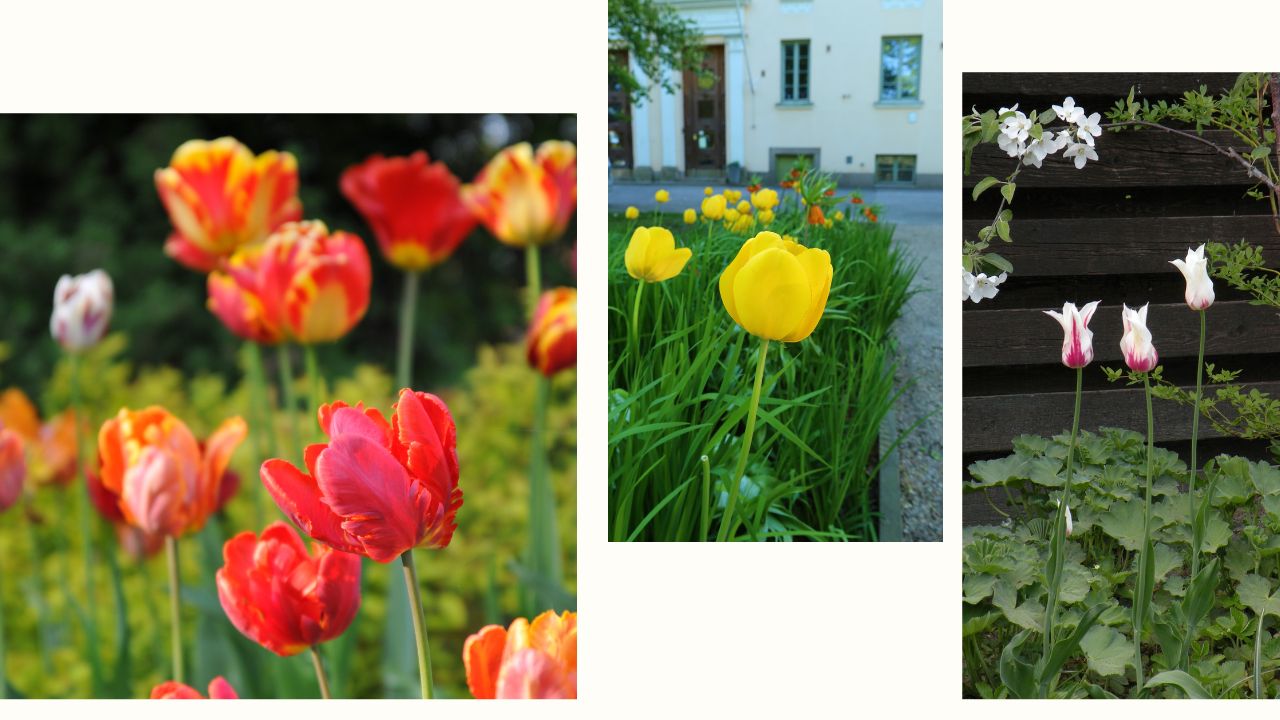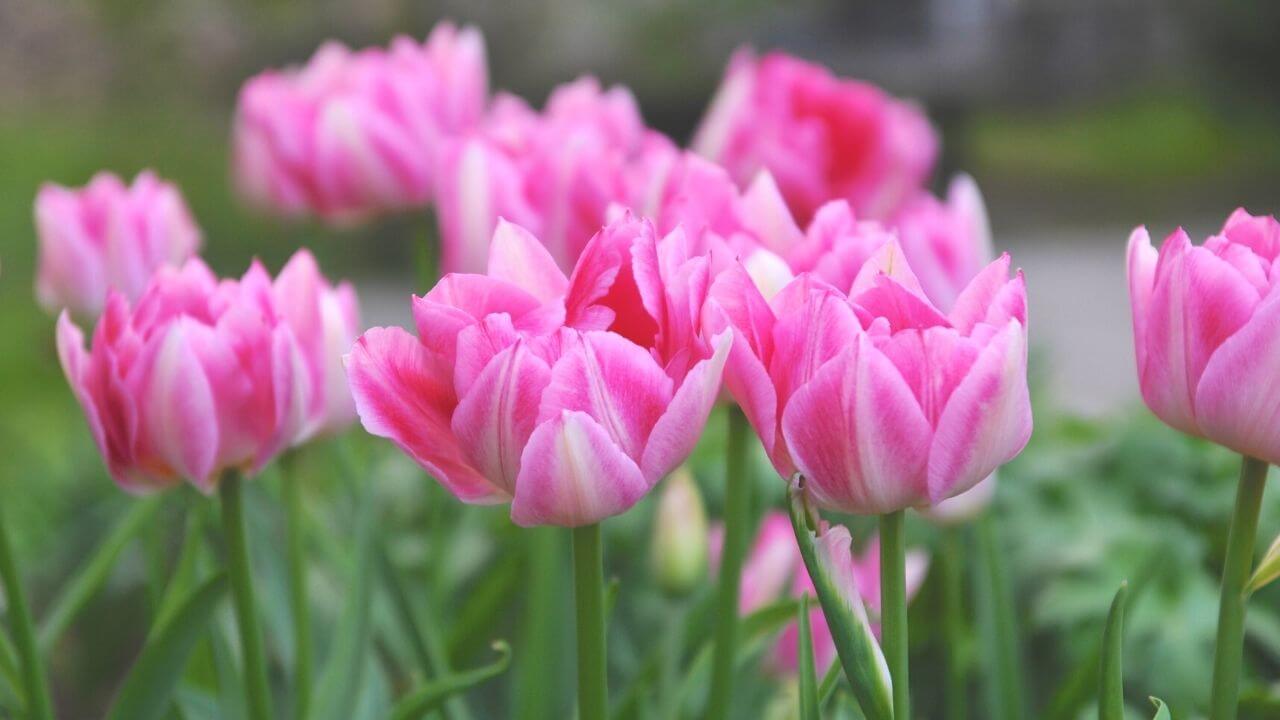Can You Plant Tulips and Perennials Together?

Are you facing a struggle like Barb is in her garden? The desire to create a lush perennial oasis in the same spot where you've planted tulip bulbs can present a challenge, but it's a challenge that can be overcome with careful planning and some gardening know-how.
Tulip bulbs and perennial plants have different growth habits and requirements, which can make it seem like they're incompatible. Tulips are typically spring-blooming bulbs that go dormant after flowering, while perennials are long-lived plants that return year after year.
Understanding the Challenge
You can plant tulip bulbs between your perennials, and they grow happily together if you consider the following things:
- The watering needs
- The timing of the growth
- The need for division

Choose Complementary Tulip and Perennial Varieties
Actually, it's a great idea to combine tulips with perennials!
Start by selecting tulip varieties that naturally complement your perennial garden to create charming late spring and early summer borders. Consider tulips that bloom early in spring, allowing them to shine before your perennials take center stage.
Plant your tulip bulbs BETWEEN the emerging perennials to ensure a seamless transition from tulip blooms to perennial growth. This way, the perennials will provide natural cover as the tulips fade. Just remember to choose perennials with lush foliage that is high enough.
You can group your tulip bulbs in clusters or drifts between perennials within your flower beds. This creates a visual impact and makes it easier to manage if you want to lift and store the tulip bulbs after they've bloomed and their leaves have turned yellow. I usually don’t. I let them go dormant in the soil to bloom again next year.
>> It's crucial to let the leaves dry naturally so the bulb can restore all the energy from the leaves for the following year.
Perennials that Enjoy the Sun and Don't Need Intensive Maintenance Are Perfect Companions
Keep in mind that tulips go dormant after flowering. Most thrive in a flowerbed that gets a lot of sunshine and is pretty dry during summer.
The bulbs must get their dormant period after flowering to get your tulips growing and blooming the next year and the years to come. That is why they are a great match with many perennials but not so much with annuals requiring intensive feeding and watering.
For example, you can consider perennials like catmint (Nepeta) and hardy salvia (Salvia).

Plant Low-maintenance Perennials with No Need for Division
I suggest choosing plants to grow happily in the same place for years without a need for division. I mean species like peonies (Paeonia), daylilies (Hemerocallis), and ornamental grasses. They all are a good match for early flowering tulips.
Ground-covering perennials are an even better and more low-maintenance option. If you choose plants like bigroot geraniums (Geranium macrorrhizum), they cover the ground density and hide dying tulip leaves nicely under a dense foliage cover.

Strategic Perennial Bed Creation with Tulips
How to proceed in creating your flowerbed for planting tulips and perennials depends on your situation.
If you have a perennial bed, plant the tulip bulbs between the perennials in the autumn.
If you already have a density planted area of tulips with no perennials, I suggest waiting until all the tulips have flowered and their foliage has turned brown. Then, lift the tulip bulbs, prepare the flowerbed, plant perennials, and replant the bulbs. It's a little bit more work, but in that way, you will not cut your tulip bulbs into pieces when preparing the flower bed for perennials and planting them.
Keep Adding More Tulips every Autumn
Tulip bulbs have a limited lifespan and may decline in performance after a few years. Be prepared to add more of them to maintain a vibrant display. Prepare to fertilize tulips before flowering starts and keep deadheading when blooms fade. However, some species will grow and cheer you up every spring for years to come.
🌷 Combining perennials and tulips can truly elevate your garden to a new level of beauty and diversity. With patience and care, you'll find that these seemingly incompatible garden residents can coexist to create a stunning landscape that evolves from spring to summer.

You might also be interested in the following blog posts:
3 Rules of Thumb When Planning with Spring Bulbs
Wanna Choose Best Snowdrop for Romantic Garden? Here's the One
The 'Finola' Tulip: A Splash of Charm for Your Garden
Want to Discover Your Garden Style?
Take my popular Garden Style Quiz to find out which outdoor aesthetic suits you best—and get tailored ideas for building a garden you love.


